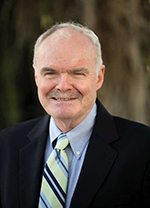The Message Gains Traction

Up and down the tracks you see the future—piles of ballast waiting to be spread for new rails; a clean new track appearing where none existed a week before; a street crossing closed for a weekend and reopened with a second track where before only one existed; and, 40 miles apart, whole streets being closed as the foundations for modern stations in West Palm Beach and Fort Lauderdale are being sunk. All Aboard Florida is underway.
Perhaps it is the inevitability of this new passenger train that has caused a decline in the noisy objections, which have been heard since it was announced several years ago. It was not so bad in the Miami Herald and Sun-Sentinel, where there was only an occasional letter opposing the new train. But Palm Beach County and the Treasure Coast were different. The Palm Beach Post for months seemed to carry at least one letter a day attacking Florida East Coast Industries new high-speed passenger train from Miami to Orlando.
The project has been opposed on various grounds. Some, such as the interference with marine traffic, are valid. Others are not well founded. Some of the objectors are influential people, lawmakers and such, reacting to the sentiment of their constituents. We presume local talk radio was also filled with such rants.
It seems to have slowed recently. Maybe it’s because with construction visibly underway, opponents have given up. Or, more likely, it has begun to sink in that this train may not be the end of the world for the communities through which it will pass. If so, we can thank some thoughtful comments from business leaders who have stressed the long-range benefits of the train. What some people forecast as disaster may turn out to be the best thing for South Florida since, well, since Henry Flagler brought his railroad through almost 125 years ago.
Its detractors say the train from Miami to Orlando will never draw enough traffic to pay for itself. That’s a reasonable argument, given the state of passenger trains elsewhere in the country—few of which would exist without government support. Reasonable, unless you realize that the Florida East Coast people are obviously thinking of real estate development as well as passenger service.
We already see that happening in Miami, where a major commercial development is underway surrounding a new station—the southern terminus of the fast train. Already, Tri-Rail, a nice train on the wrong track, is planning to shift some trains to the new Miami station by way of an existing connection between the CSX tracks and the FEC in Dade County. That will make Tri-Rail into the heart of Miami (it presently ends far to the west at the airport) and provide an appreciably more useful service.
But that benefit pales compared to Tri-Rail’s ultimate goal of putting some service on the FEC’s new fast track all the way from downtown Miami to Palm Beach, and possibly beyond. Tri-Rail has already identified (and published) possible stations along that route. The realization that this will happen may have a lot to do with the quieting of objectors.
One of their major criticisms has been noise (although modern fast passenger trains don’t make much noise and what they do passes quickly) and a decline in property values along the route.
It may be sinking in that just the opposite should happen. Elsewhere in the country, where commuter trains are long established, property near stations is gold. Philadelphia, New York, Chicago and other cities with extensive commuter networks have seen apartments and office buildings spring up within walking distance or short drives from stations. In New York, Madison Square Garden is built over Penn Station. Philadelphia has Penn Center, a complex of office towers, restaurants and hotels stretching for blocks over underground tracks that were once at ground level. In the suburbs (a comparison appropriate to our local situation) homes that are close to stations have notably greater value than similar neighborhoods not as conveniently located near rail lines. It is already happening here, in downtown Miami and Fort Lauderdale, where there has been a rush of construction (too much, many think) within a few blocks of the new station underway near Broward Boulevard.
Our hunch is that this reality is not lost on developers—who are probably already moving on land near proposed Tri-Rail stations in Palm Beach County. That land, where developed, is often low use, light industry and a bit on the seedy side. That’s why such businesses are near rail lines, out of the public’s sight on property not suited for much else. It is a perfect opportunity for investors with vision. Certainly the planners at the FEC have understood this all along. The railroad has extensive land holdings all along its tracks.
It has taken some time, but the public seems to be getting the message, too.
Image Via
